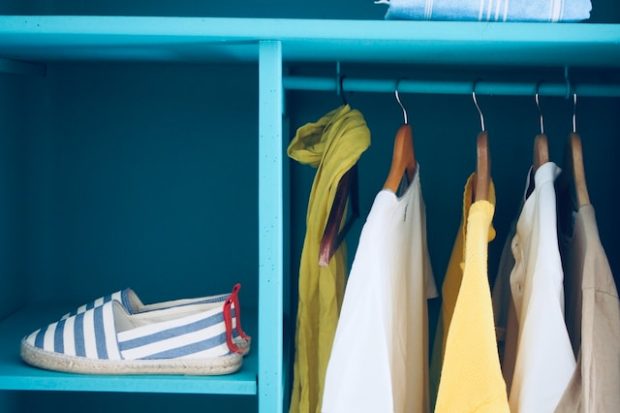You wake up one morning to discover that your basement has flooded overnight. In dismay, you realize your most loved wardrobe, stocked with a diverse range of outfits that reflect your personality and style, is completely soaked.
This whole situation might seem like a nightmare and you might be finding it hard to figure out what to do next.
But take a deep breath. There are things you can do to salvage your clothing from water damage.
Understanding Water Damage
It’s crucial to understand that water damage isn’t just about clothes getting wet. The type of water involved plays a significant role in how you’ll manage the damage.
Clean water from a pipe or rain won’t pose much of a threat whereas contaminated water from sewage or flood would require immediate and thorough disinfection before anything else is done with the garments.
Seeking Professional Help
Some damage may seem beyond personal repair efforts; this is where professional help swings into action.
Don’t hesitate to contact a Water Damage Specialist, who has skills specifically tailored for this niche. They not only help recover what seems irreparable but also provide valuable advice on maintaining a restorative environment against future water damage incidents.
Safe Handling of Wet Garments
Treating wet clothes should be a careful process done mindfully. Avoid stretching or shaking them as this may alter their shape, size, or color consistency.
Choose instead to gently blot excess water off them with clean towels before hanging them up in dry areas away from direct sunlight.
Identification of Damaged Materials
The first step in reclaiming your wardrobe is recognizing and examining each damaged item. Different fabrics react differently when exposed to water. Some fabrics might bleed colors, some might shrink while others potentially stretch out of shape.
You must make an assessment based on the material of your clothing, which will determine your plan of action for each garment.
Initial Drying Techniques
For effective drying without causing more harm, turning to slow drying methods in airy, well-ventilated spaces does wonders.
Do remember not to use heat-intensive devices such as hair dryers since they will considerably shrink delicate fabrics.
Cleaning and Disinfecting Procedures
Once slightly dried, washing each piece individually might seem like a daunting task but it’s necessary for proper disinfection.
Use gentle detergents and cleaners suitable for each fabric type; stubborn stains might require special care so be patient while brushing those off gently.
Repairing Water-Affected Clothes
After cleaning comes mending any unwanted alterations caused by water damage – this could include de-shaping or dye-transfers between clothes caused by soaking together for some time.
You might consider visiting a trusted tailor who specializes in fabric repair jobs for severely damaged clothes that hold sentimental value. Unless you have the skills to make clothes and repair them yourself of course.
Putting Preventive Measures in Place
Prevention is always better than cure – you surely don’t want another fashion emergency like this happening again.
Start looking for ways through which you can mitigate any future potential disaster situations such as installing alarms for early detection of leaks or redesigning storing methods for more vulnerable clothing pieces.
Environmentally Friendly Salvaging Methods
Opting for green cleaning solutions can help save residual environmental impact post-disaster; eco-friendly products including detergents and conditioners are enough to restore your beloved clothes without harming the environment at large.
Essential Tools for Quick Recovery
Equip yourself with essential gear – rubber gloves, non-abrasive sponges, delicate brushes, and specialized cleaning agents.
These are all used alongside instructions that ensure safety alongside effective treatment towards restoring your precious clothing items back into wearable conditions again.
Hygiene Concerns Post-Disaster
Water-clogged wardrobes not only damage your fashion items but also pose significant hygiene concerns. Moisture promotes the growth of mold and mildew, which can further deteriorate your clothing.
You are right to take mold health concerns seriously. Ensuring the right hygienic conditions before venturing into recovery efforts guarantees the safety of both clothing and anyone dealing with them.
Preserving Undamaged Items
While you’re committed to saving your water-damaged outfits, don’t overlook the attire that’s safe and dry.
Make sure you extract them from the damp environment and move them to a clean, dry place quickly. This will ensure they remain unaffected throughout the cleaning process of their drown-drenched companions.
Post-Recovery Care
After reclaiming your wardrobe from the brunt of water damage, don’t abandon the maintenance routine. Your clothes have been through a traumatic experience and they would need consistent care to regain their original luster.
Moisture and high humidity affect homes and their contents. Regular inspections for any sign of residual damage or newly developed mold will keep them fresh and wearable for longer.
Final Thoughts
Facing an unfortunate incident such as extensive water damage over keepable collectible wardrobe dresses can be overwhelming at first sight.
Breathe deep understanding that chaos isn’t permanent but simply temporary disruption. Your clothes may have sustained a heavy hit yet remember there are means through which they can regain their previous charm and usability.
Read More:


